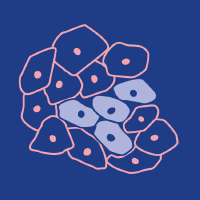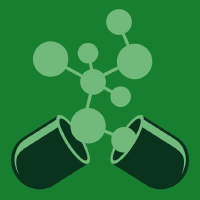Topic Menu
► Topic MenuTopic Editors


New Metal-Based Drugs for Cancer Treatment: Single Molecules, Nanomaterials, and Beyond
Topic Information
Dear Colleagues,
The search for new therapeutic alternatives to combat cancer has found in the transition elements a very abundant source of compounds and nanostructures with different geometric arrangements and reactivity that provide unique opportunities to interact with varying sites of recognition and exert mechanisms of action other than those drugs that are currently used to kill tumor cells. These features not only provide new tools independently but also could provide advantages enhancing concomitantly or sequentially the effect of known antineoplastic agents. In this Topic, the most recent findings regarding preclinical studies of metallodrugs, including but not limited to synthesis, characterization, simulation, computational modeling, and theoretical approach to new antiproliferative and antitumor agents, qualitative/quantitative structure-activity studies, bio-speciation/bioaccumulation, interaction with specific enzymes and nucleic acids, cytotoxicity, genotoxicity, teratogenicity, and general toxicity will be outlined. Submissions of original papers and focused reviews are welcome.
Dr. Juan Carlos García-Ramos
Dr. Yanis Toledano-Magaña
Dr. Gener José Avilés Rodríguez
Dr. Rodrigo Galindo-Murillo
Topic Editors
Keywords
- metalbased drugs
- antiproliferative/antitumor activity
- coordination compounds
- organometallic compounds
- metallic nanoparticles
- apoptosis/necrosis
- cytotoxic selectivity
- genotoxicity
- biodistribution
- biospeciation/bioaccumulation
- pharmacokinetics
- simulation
- computational chemistry
- SAR/QSAR
- molecular dynamics
Participating Journals
| Journal Name | Impact Factor | CiteScore | Launched Year | First Decision (median) | APC |
|---|---|---|---|---|---|

Biomedicines
|
4.7 | 3.7 | 2013 | 15.4 Days | CHF 2600 |

Cancers
|
5.2 | 7.4 | 2009 | 17.9 Days | CHF 2900 |

Future Pharmacology
|
- | - | 2021 | 20.5 Days | CHF 1000 |

Journal of Clinical Medicine
|
3.9 | 5.4 | 2012 | 17.9 Days | CHF 2600 |

Pharmaceutics
|
5.4 | 6.9 | 2009 | 14.2 Days | CHF 2900 |

MDPI Topics is cooperating with Preprints.org and has built a direct connection between MDPI journals and Preprints.org. Authors are encouraged to enjoy the benefits by posting a preprint at Preprints.org prior to publication:
- Immediately share your ideas ahead of publication and establish your research priority;
- Protect your idea from being stolen with this time-stamped preprint article;
- Enhance the exposure and impact of your research;
- Receive feedback from your peers in advance;
- Have it indexed in Web of Science (Preprint Citation Index), Google Scholar, Crossref, SHARE, PrePubMed, Scilit and Europe PMC.

